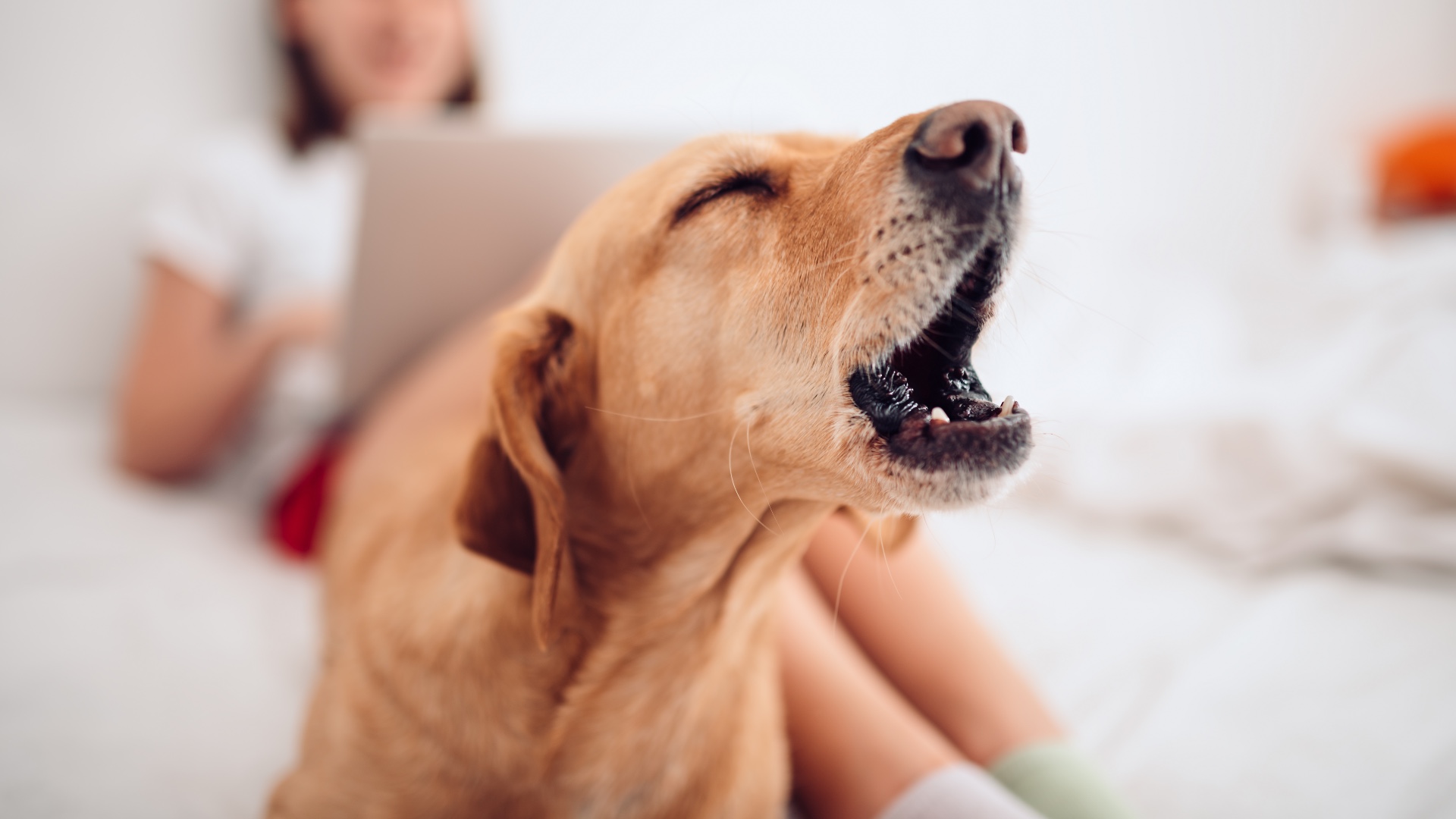Trainer reveals three biggest trigger factors for reactivity, and how to help your canine stay calm
Struggling with your dog's reactivity? Here are the three biggest triggers to be aware of...

Disclaimer: Unless specifically stated, any expert comments quoted in this news piece have been taken directly from the Instagram post cited below.
Of all the challenges that can come with being a pet parent, figuring out how to calm a reactive dog is at the top of the list.
Reactive dogs become overly aroused by common stimuli and this causes them to overreact.
Something as simple as the doorbell going off could trigger loud and continual barking, or a stranger walking past could cause a dog to lunge and growl.
One thing that can be helpful when dealing with reactivity is being aware of the three biggest trigger factors and how to work with them to ensure your canine stays calm.
To help you understand these, trainer Jill Hassevoort (an expert in working with reactive dogs) has shared a post to Instagram in which she breaks down each of these triggers.
Let's take a look...
Get the best advice, tips and top tech for your beloved Pets
A post shared by Jill Hassevoort | Virtual Dog Training and Behavior (@jackandjilldogtraining)
A photo posted by on
1. Distance: "This is the one that probably gets talked about the most. Generally, triggers that are further away from your dog will be easier for them to cope with," explains Hassevoort.
2. Intensity: "If your dog tends to react strongly to strangers, then a stranger standing still might be less intense than a stranger walking in their direction. If your dog reacts strongly to other dogs, then a mellow, slow moving dog may be less intense than a hyper, bouncy dog," Hasservoort says.
"This definitely varies a lot from dog to dog, so it’s important that you get to know what your individual dog finds most troubling and help them out around those intense triggers."
3. Duration: "How long must your dog cope with the presence of the trigger? Is it a stranger walking by and then they’re gone, or is there a repair crew working all day in front of your house? Does the dog a few yards down bark once, or do they continually bark for a period of time?"
Hassevoort says it can be helpful to think of these triggers as being like dials with the goal being to try to avoid more than one dial being turned up at a time.
"In your training setups, try to only adjust one dial up at a time. If real life hits and cranks up a dial unexpectedly, find ways to turn the other ones down for your dog to help them cope," she advises.
Reactivity can be a challenging issue to deal with and we recommend working with a qualified professional if you feel you and your dog would benefit from some extra support.

Kathryn is a freelance writer who has been a member of the PetsRadar family since it launched in 2020. Highly experienced in her field, she's driven by a desire to provide pet parents with accurate, timely, and informative content that enables them to provide their fur friends with everything they need to thrive.
Kathryn works closely with vets and trainers to ensure all articles offer the most up-to-date information across a range of pet-related fields, from insights into health and behavior issues to tips on products and training.
When she’s not busy crafting the perfect sentence for her features, buying guides and news pieces, she can be found hanging out with her family (which includes one super sassy cat and a kitten), drinking copious amounts of Jasmine tea and reading all the books.
She has written for a range of publications, including Fit&Well, Top Ten Reviews, LiveScience, Goodto, and Product Hunt.
